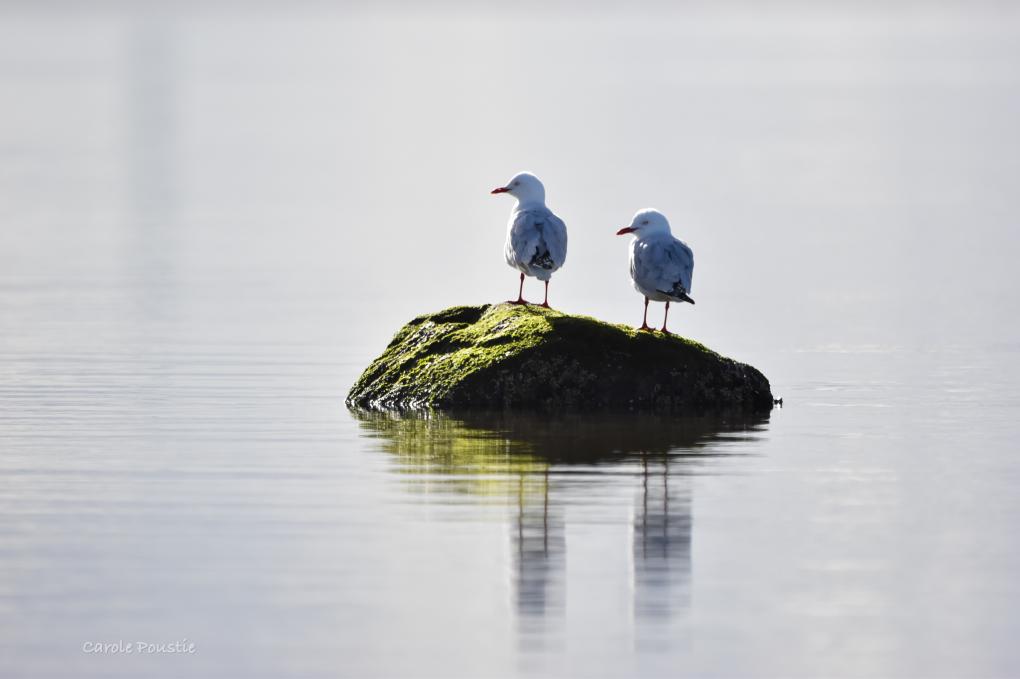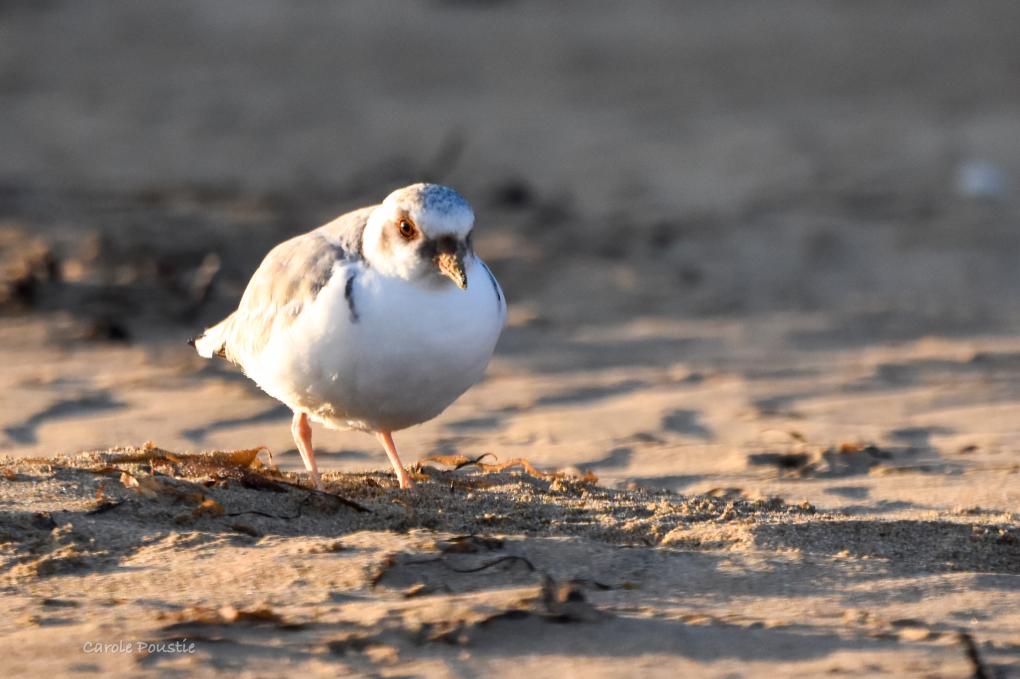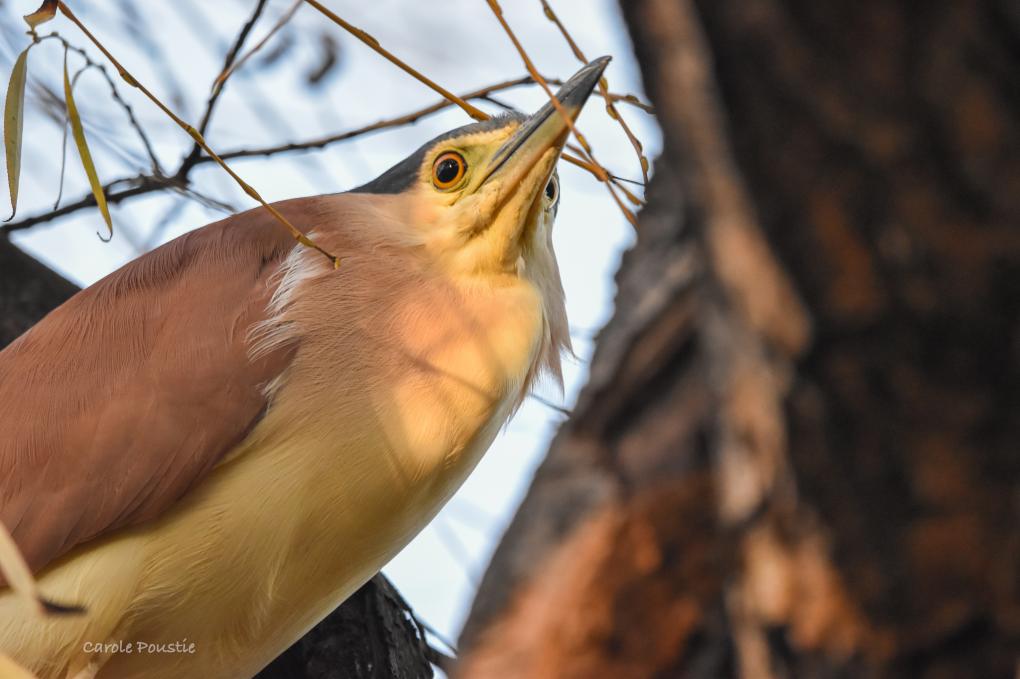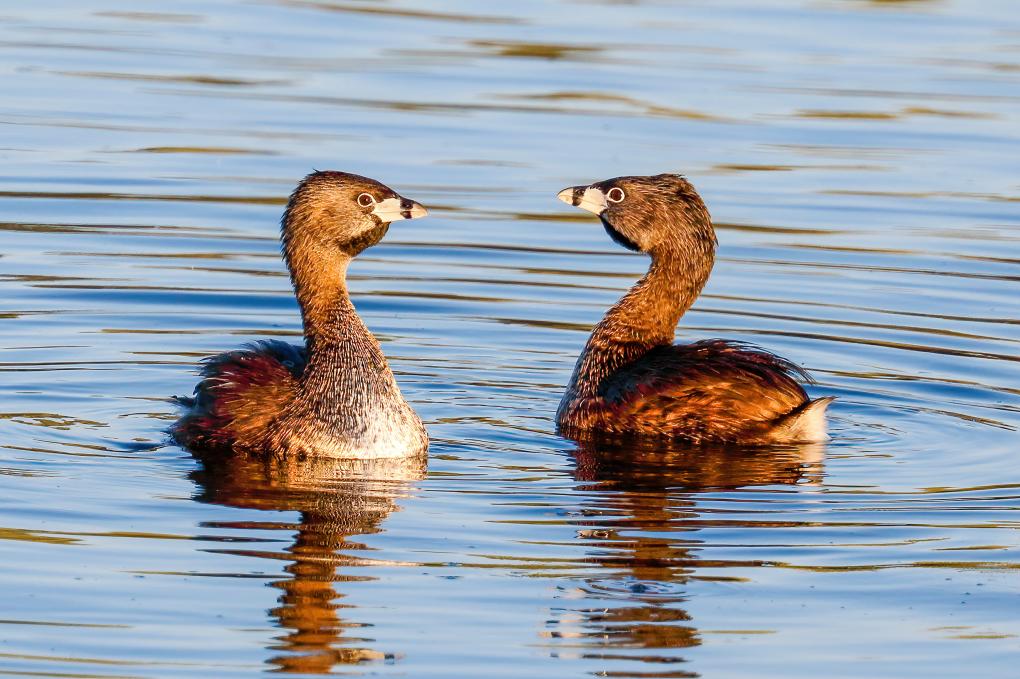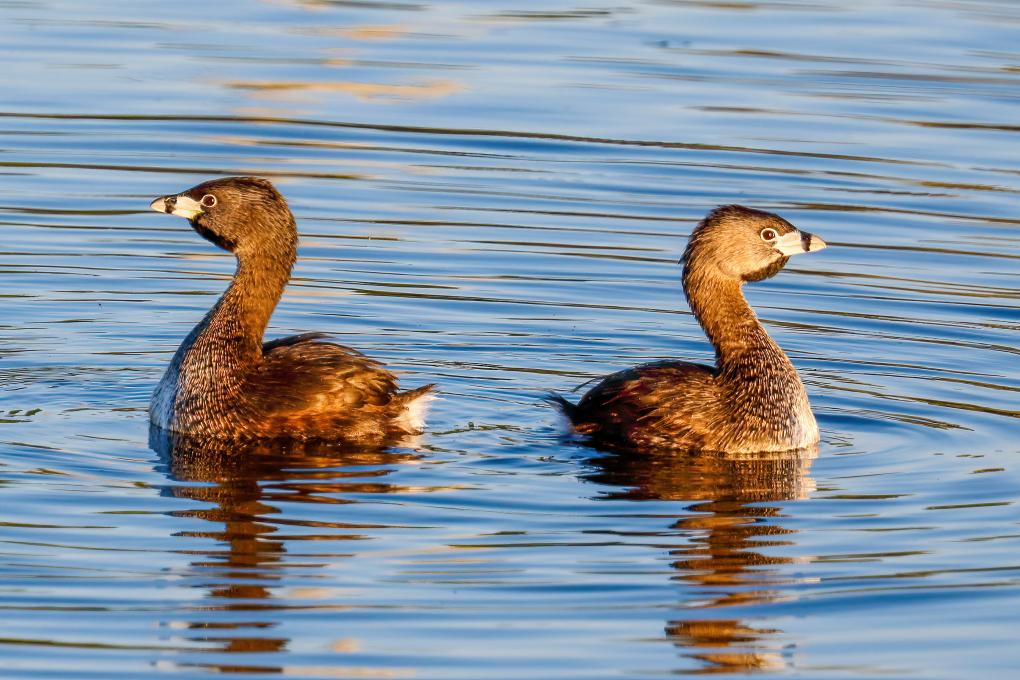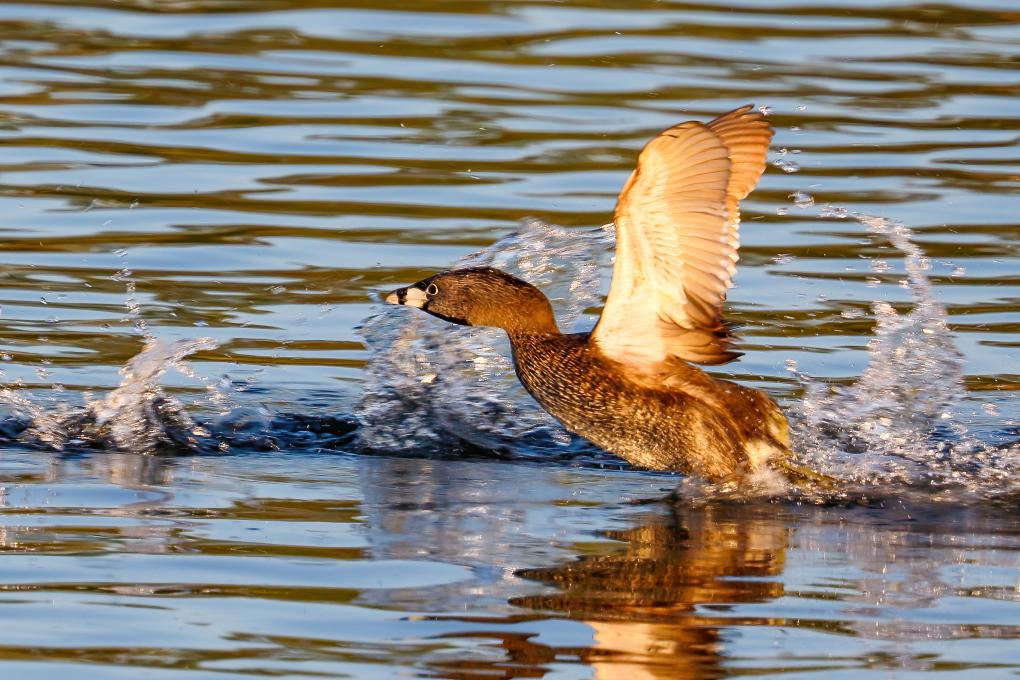The Cornell Lab Bird Academy › Discussion Groups › Bird Photography with Melissa Groo › Practice Curating, Editing, and Sharing Your Photos
-
As I take my daily walks around my neighborhood lake, I've had the opportunity to get frequent glimpses into the life of an Osprey who, though apparently not nesting there, is at least a regular visitor. These images illustrate the events told here. Several of the techniques from the course were used in capturing, cropping, and editing the photos. The Osprey has two regular perches, one near either end of the lake. It generally uses the one nearer the stream that feeds the lake to look for and dive for fish. After catching a fish, it goes to the other perch (closer to the dam) to devour it. One would think that a large raptor like an Osprey would be the proverbial big fish in a small pond in such a location and be able to do as it pleased. The Osprey does, however, face challenges at the lake. For example, on one occasion, the Osprey had the awkward experience of swooping down, catching a fish, and heading to its dinner perch, only to find a Great Blue Heron sunning its wings there. This apparently caught the Osprey by surprise, causing it to pull up and drop its fish. The neighborhood American Crows (with, perhaps, assistance from the Fish Crows that also frequent the lake) create additional challenges for the Osprey. On more than one occasion, I witnessed a Crow intercept the Osprey immediately after the Osprey had caught a fish and aggressively attempt, apparently, to take the fish away from the Osprey in mid-air. On numerous other occasions, the Osprey has been unable to fish or even sit in peace, as gangs of Crows (though perhaps not a sufficient number to consitute a Murder!) occupy other branches in the tree where the Osprey perches and harrass it mercilessly, often leading the Osprey to fly away, with squawking crows in pursuit.



-
1. Deciding which software tools to use for editing my images, both RAW and jpeg. I use both a Canon 7D mark 2 and a Sony RX10 Mark 4 for my bird photography. When shooting RAW which I do only about 1/2 the time I at first used the digital image processing tools provided by each camera maker. I took the trouble to download and learn Sony's Imaging Edge desktop to view and manipulate the raw image (.ARW) and then export to Photoshop. It seemed worthwhile to have 1 tool that worked for both cameras so I purchased the newest version of Adobe Photoshop Elements, which includes Camera Raw. I don't think it is as powerful as the tools specific to each camera model, and it appears to be fairly similar to Lightroom. One of the problems I've encountered is in photographing white birds against water. When shooting in manual mode with auto ISO the whites are often totally burned out, so I will use exposure compensation to underexpose by at least 1 full stop. Then in photoshop I can select the offending bird (quick select) and use a brightness/contrast layer mask over just that area to bring in detail in that previously all white area. I don't find any of the raw processing tools that allow you to select just one area of the image, and Photoshop is very good at that. 2. Organizing the images on my computer. As soon as I get home from a photo shoot I view all images by projecting to the TV screen, which allows me to cull at least 75% of them on the card. I did not want to use Organizer to define a system of storage on my computer (which is a Dell laptop). Since I generally bird in a few hotspots in this area I organize by folder for each location, with a folder within for the date (from camera), which I then break down by species. I'm trying this method for now. 3. Sharing with the world I post to my Flickr account and also to Facebook, sometimes to the specialized birding groups within FB, but also to eBird. I've had an account there for the last 3-4 years. I get the regular rare species alerts for our county from eBird, and occasionally one of the posts is my own. 4. Telling a story In the past I've had a Wordpress blog for my travel also birding. But I found very few people looked at them, so it was too time consuming for me. So here is my example of telling a story: I have been visiting the Andree Clark Bird Refuge here in Santa Barbara at 2-3 evenings a week. Only a 10 minute drive from my house plus a 10 minute walk to the 3rd viewing platform where the bird activity in the evenings is often quite rewarding to photograph. I especially like watching the several species of herons and egrets that make a home there. Last night I arrive at the bench around 7:15 PM to find a man with a couple of boisterous children already there. At first I saw only a distant Brown Pelican and then the Snowy Egrets started to join the scene - at least twelve of them. I was happy to see the people leave and have the bench to myself. I had my Sony with shutter speed set to 1/1000 and my aperture to F4, which is the largest aperture for when the lens is zoomed in past 24mm. Suddenly I noticed a Black Skimmer fly in and beginning skimming. The bird was much more distant than when I see them att the beach, but I got a few acceptable images at 600 mm lens position.
 Up close I noticed a couple of Black Necked Stilts probing in the water much closer to me. I especially liked the color of the water. Unfortunately I did not capture the full reflection as I was zoomed in too far.
Up close I noticed a couple of Black Necked Stilts probing in the water much closer to me. I especially liked the color of the water. Unfortunately I did not capture the full reflection as I was zoomed in too far.
 The Snowy Egrets became quite boisterous. I have always been challenged when multiple birds are interacting, but I did capture these two and after correcting for burnt our white, and some cropping in Photoshop I got this playful image.
The Snowy Egrets became quite boisterous. I have always been challenged when multiple birds are interacting, but I did capture these two and after correcting for burnt our white, and some cropping in Photoshop I got this playful image.
-
One of the aspects of editing that I find the most challenging and which I need to learn more about is cropping. Melissa's guide of not cropping more than 25 to 30% is a good guideline, but I still struggle a lot in this area. I try to follow the rule of threes in making cropping decisions and remembering to keep more room above the bird and in front of the bird for it to walk or fly into. But sometimes I have no idea if I have made a good cropping decision or wrecked the shot! 😩 Also I'm a bit in the dark about whether the cropping should also take into consideration standard sizings: 4x5, 8x11 etc. Any advice here appreciated! Here are three photos it would be good to get cropping feedback on. 1. Silver gulls that I've left uncropped. 2. Juvenile hooded plover — okay as is or crop a bit more/less? 3. Nankeen(rufous) night heron — uncropped. Is the big block of tree to the right a problem? Does it distract or okay as is? Or should I try to cut some of it out and lose a bit of the heron? (It was tricky to photograph as the way it was positioned in the tree, ready to roost, there were so many branches in the way!) (These birds are Australian) Thanks!



-
These aren't the best of my shots, but capturing the experience was well worth the tradeoff. I recently visited a local birding location favorite, a small lake with walking paths through and around it. This time I decided to setup my tripod and looking for something interesting on the lake as the sun was setting behind me. Aside from the usual suspects (mallards, geese, coots, etc), I was tracking and taking shots of a single Pied-Bille Grebe. 30 minutes later a pair showed up and started this interesting ritual. They were both about 16 inches apart from each other and sitting higher up in the water than their normal stealth diving mode. For about 10 minutes, each bird rotated around and around in the water, as if they were both scanning the area to create a panoramic view of their surroundings. As they were doing this, randomly they would align, facing each other, away from each other, looking the same direction, etc. I captured shots of this, and then after this activity, they turned to each other. The grebe on the right opened its beak wide directly at the other with a call a few times (I captured this as well). I assume this is part of their mating ritual. Then, that original single grebe decided he might join the fun and approached the pair after which one of the grebes chased him off. It was super interesting and entertaining to watch! I used Adobe Light Room to edit this set, using some of the principles discussed by Melissa. In particular, I like her suggest to back off on saturation and use vibrance, as it tends to be more subtle. I also reduced some of the shadowing slightly, as it masked some of the finer details. Other than this, one of my biggest challenges is the editing process is knowing when to stop and be satisfied with the output. I will often experiment and like all of the various outputs, and so it is hard to decide which to go with. As a new photographer, I am also starting to pickup on the various editing styles of other photographers. Some really amp up the sharpening and enhance the vivacity of the colors in their shots to the point that the shots look almost surreal (I would consider this a more "augmentative" editing approach). Others are more moderate or conservative on sharpening or just let the original take speak for itself (the "realist" approach), or use noise reduction to create a softer look...but too much of this, I discovered, can make your shots look like oil paintings!



-
Oh wow, Krispen, what great shots and so interesting to hear that story! Would have been so fascinating and so much fun to watch. I'm very much new at Lightroom and what you say about knowing when to stop or which version looks best is really tricky! But to my eyes these look really natural. I'm so enjoying seeing such variety of birds on this forum — from around the world!
-
-
One of my biggest challenges is knowing all of the functions of Photoshop and how to edit so that I do not make the photos look over processed. For me I almost always try to take pictures of animals on a natural object (Personal preference). There are times when a man made object will add to the story of the photo. I mostly share my photos on FB in a couple of birding groups for Texas birders. For years I have put my photos in files by bird type and if I go to a ranch I make a separate folder for the trip and the have sub folders within. I have the photos on my computer and on a back-up drive. At least once a year I will make the time to go through my photos and weed out the older ones and keep the ones I like the best.
-
Yes — so much to learn to really get the most out of Photoshop. I've opted for Lightroom until I can feel more confident about what I'm doing then venture back over to Photoshop for what Lightroom can't do. I wish I had a personal tutor who could sit beside me and edit my photos with me until I get the hang of certain functions! I'm learning so much about the settings on my camera, too, that the whole learning curve is pretty steep! I'm gradually working through my photos, labelling them, and figuring out how I want to store them. That's another whole task in itself and very time-consuming! But SO important! I like your idea of filing by bird type Lucy.
-
-
How to segregate the photos e.g., birds feeding, hunting, nesting, flying, courting was an issue until remembered the collections function in Lightroom. Sorting and curating is now much, much quicker.
Read More:

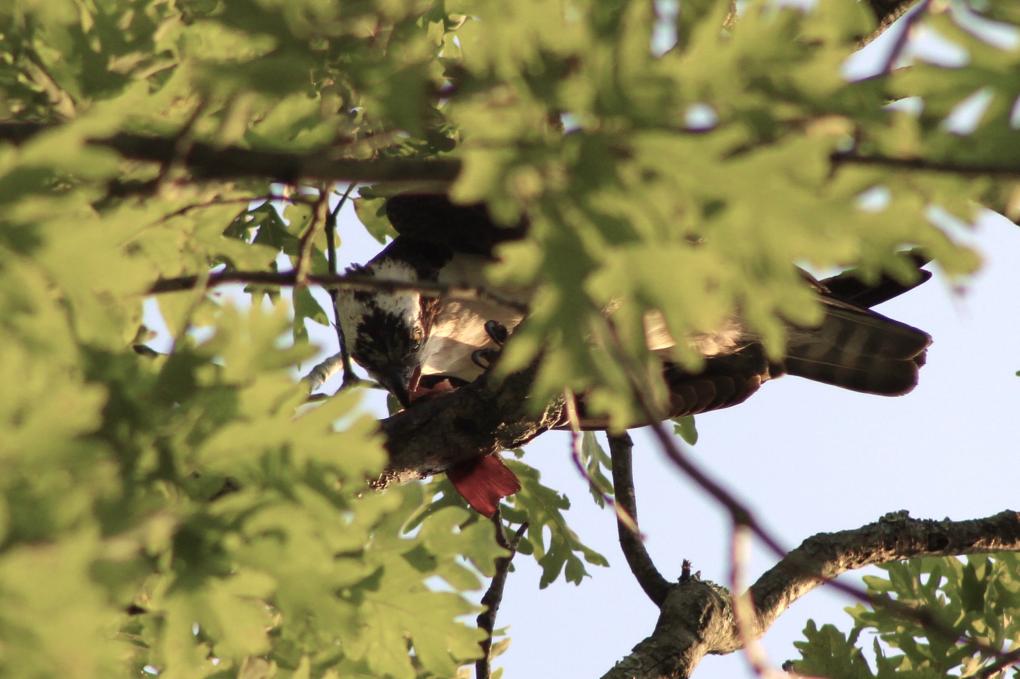
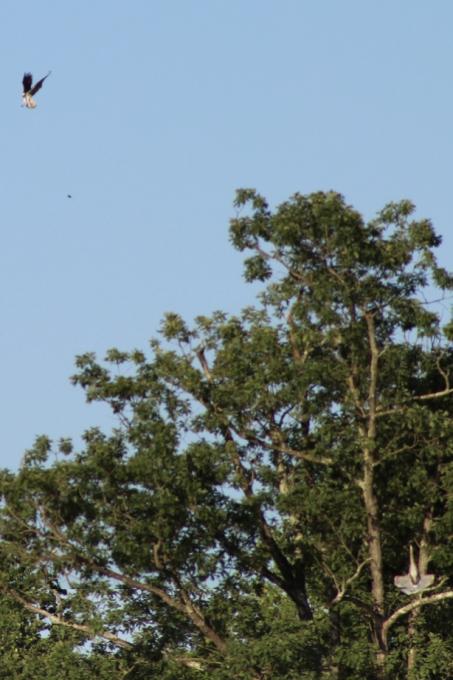
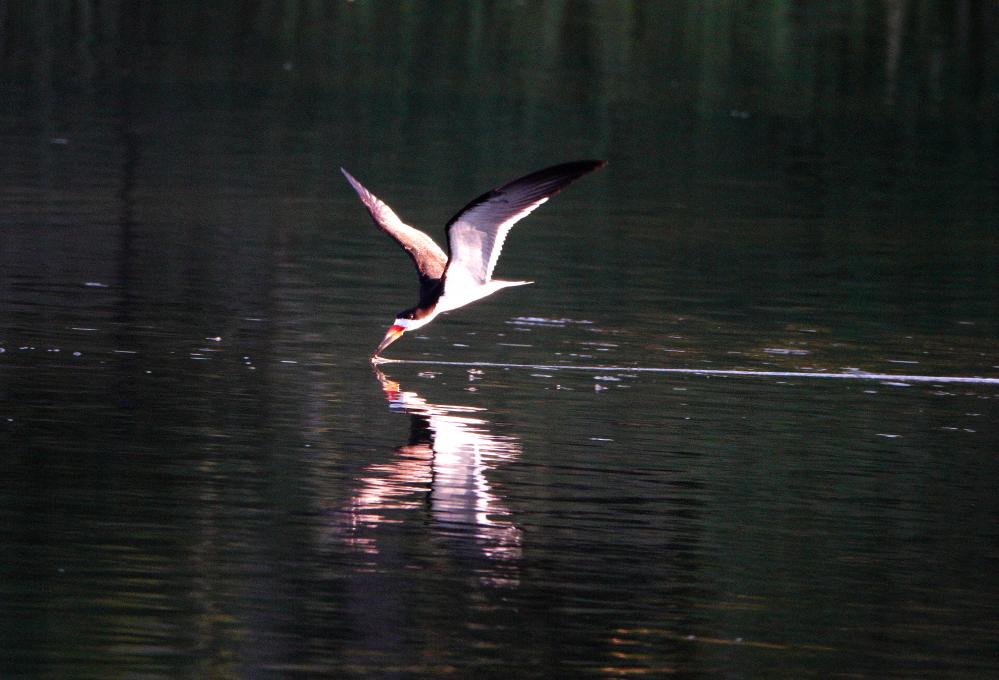 Up close I noticed a couple of Black Necked Stilts probing in the water much closer to me. I especially liked the color of the water. Unfortunately I did not capture the full reflection as I was zoomed in too far.
Up close I noticed a couple of Black Necked Stilts probing in the water much closer to me. I especially liked the color of the water. Unfortunately I did not capture the full reflection as I was zoomed in too far.
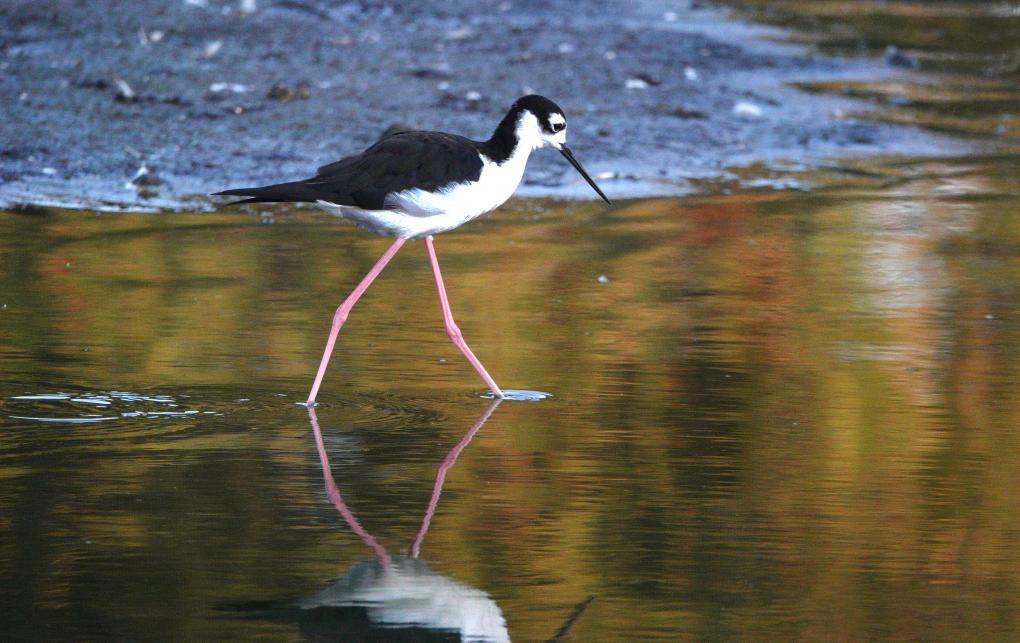 The Snowy Egrets became quite boisterous. I have always been challenged when multiple birds are interacting, but I did capture these two and after correcting for burnt our white, and some cropping in Photoshop I got this playful image.
The Snowy Egrets became quite boisterous. I have always been challenged when multiple birds are interacting, but I did capture these two and after correcting for burnt our white, and some cropping in Photoshop I got this playful image.
